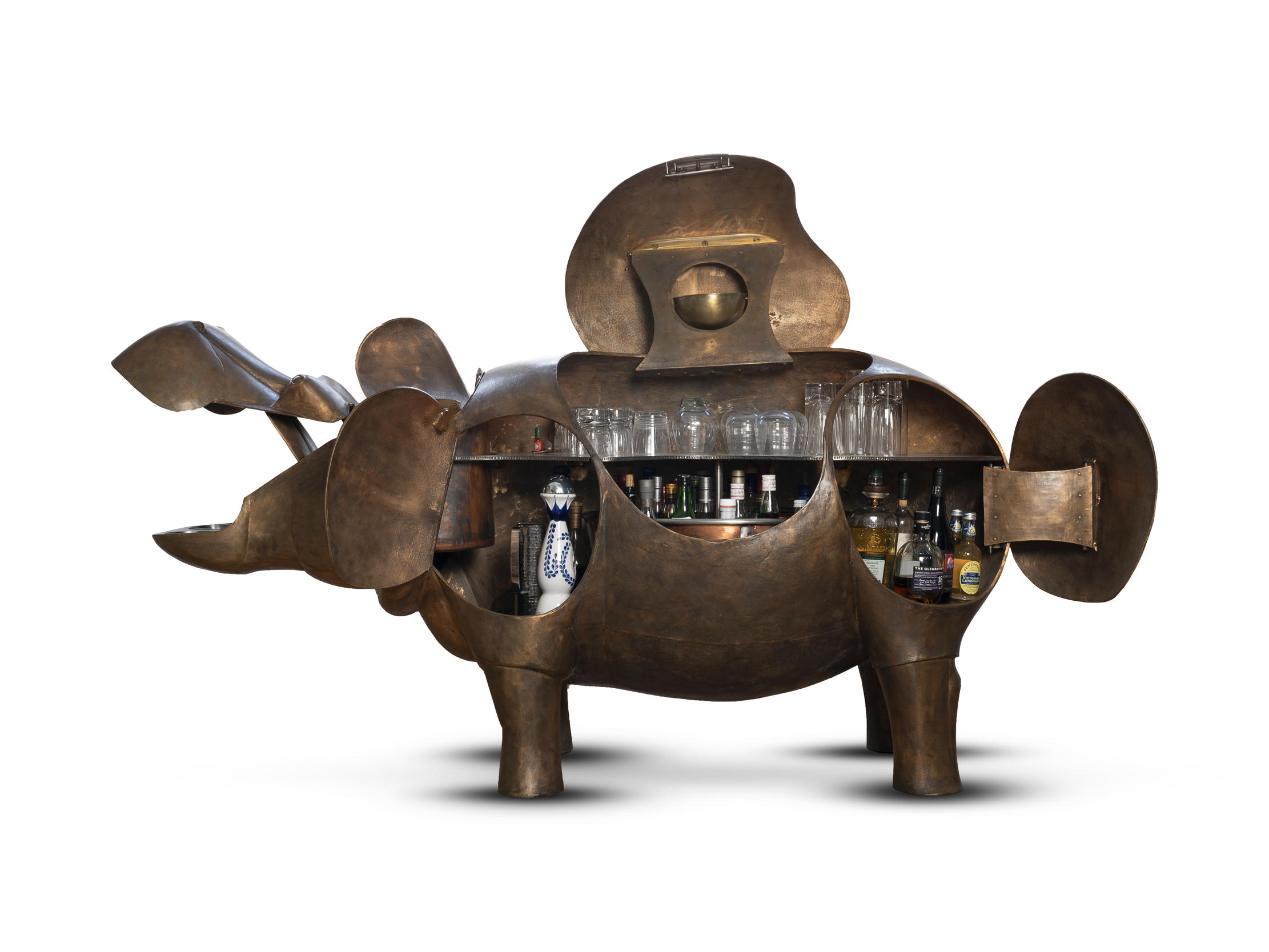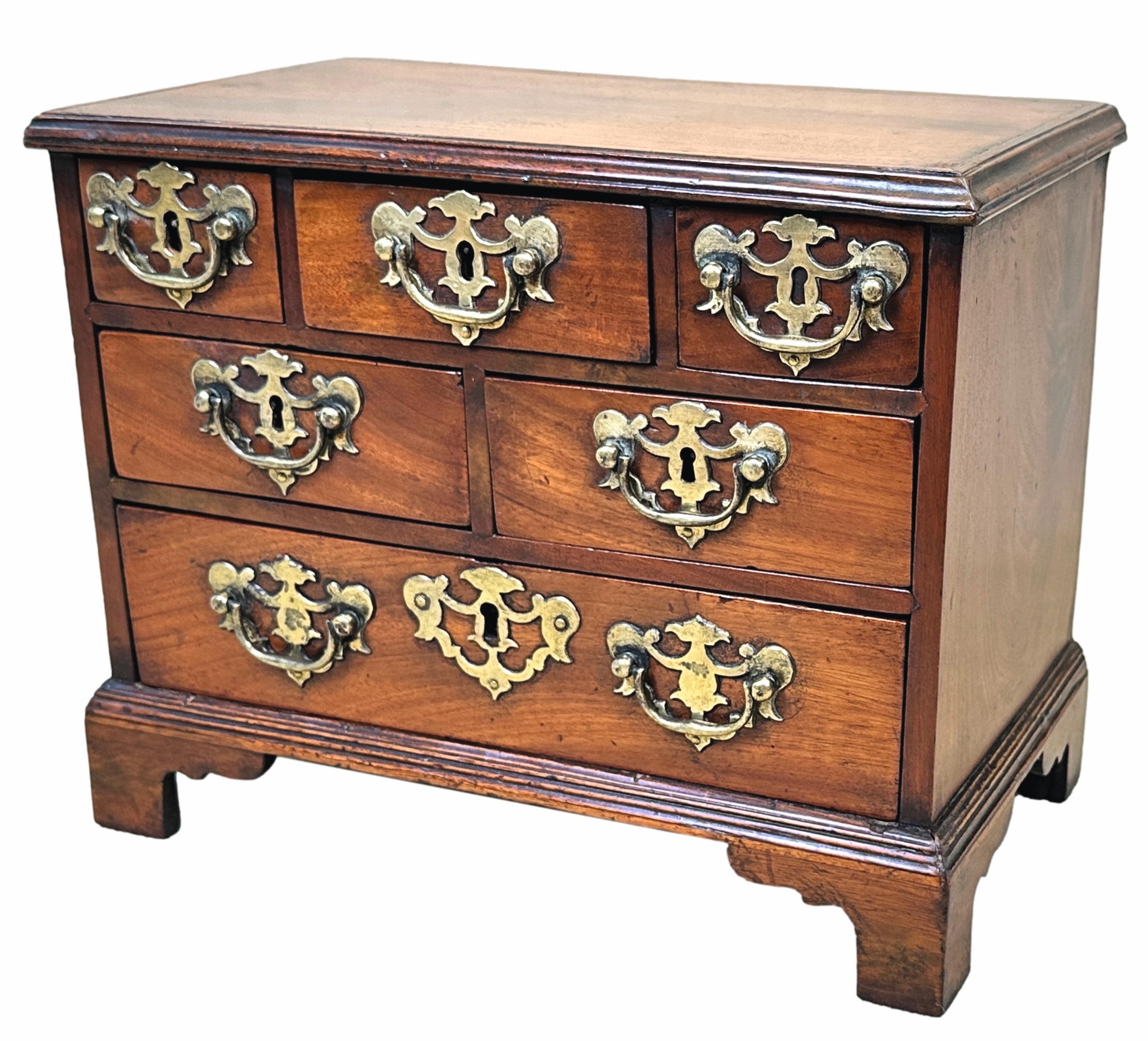The most incredible drinks cabinet you'll ever see: 'Who wouldn't want to have a whisky out of a hippo?'
Not just a bronze sculpture by a modern French master, but a bronze sculpture which opens to reveal a whisky bar. Carla Passino found out more from the art dealer who fell so hopelessly in love with the piece that he was desperate to buy it himself.


‘Who wouldn’t want to have a whisky out of a hippo?’ ponders Ben Brown of the eponymous Mayfair, Hong Kong and Palm Beach art gallery. Who, indeed? Yet, Hippopotame II (Bar), a large bronze by François-Xavier Lalanne dated 1976/2007 — if you thought he was talking about a dram-dispensing hippo of the living kind, I’m sorry to disappoint — failed to sell when Mr Brown showed it in one of his first exhibitions of works by the French artist and his wife, Claude. ‘Therefore, I decided to buy it myself.’
Mr Brown had been introduced to the Lalannes in the 1990s through his parents and remained their friend and UK representative until the couple died, François-Xavier in 2008 and Claude in 2019. By the time they met, the French artists had long been known for their quirky sculptures, although François-Xavier had initially started his career as a painter, trading brush and easel for hammer and chisel in the early 1950s.
He and Claude — whom he met in 1952 and married about a decade later — drew inspiration from Nature for their playful pieces, creating a zany bestiary that encompassed mutant rabbits with avian bodies (Lapin à vent) and cabbages on chicken legs (Choupatte). But ‘Les Lalannes’, as they became known — fused into a single entity despite mostly working individually and possessing their own artistic identities — also believed that art could fulfil a function without losing any of its essence. Thus sheep would double up as seats, monkeys as tables and hippos as bars (or baths: François-Xavier also made a life-size blue-resin hippo that turned into a tub).
"If I am honest, I hope to never sell it."
Critics panned the approach at first, but it’s this very combination of beauty and function that makes Hippopotame II (Bar) so special for Mr Brown, ‘the fact that I can use it and help myself to a whisky now and then. It is placed in my living room in London and, when friends and family come over for dinner parties, they absolutely love the work’.
The Lalannes have long had a strong following among collectors — not least Yves Saint Laurent, Christian Dior and French President Georges Pompidou, who bought a whimsical Ostrich Bar with ice-cube-housing egg and gave a brass and Sèvres-porcelain grasshopper-cum-wine-bottle cooler to the late Duke of Edinburgh in 1972 — but their work is now particularly sought after. François-Xavier’s Rhinocrétaire I, a 1964 brass desk with safe, bar and wine storage in the shape of a rhino, made a jaw-dropping €18.3 million (about £15.9 million) at a Christie’s sale in Paris earlier this year.
It’s quite possible that Mr Brown may soon have someone knocking at his gallery’s door and asking for his hippo. How happy he would be about it, however, is open to debate: ‘If I am honest, I hope to never sell it.’
When miniatures cost more than full-size versions
Spare a thought for the furniture salesmen of yore. They had the unenviable task of persuading customers to part with a considerable amount of money for a dresser or a cabinet armed only with sketches — until someone thought that they could carry along samples of the finished piece, identical in workmanship and material, but far smaller in size: furniture miniatures.
Sign up for the Country Life Newsletter
Exquisite houses, the beauty of Nature, and how to get the most from your life, straight to your inbox.

Hop across a few centuries and the one-time sales tool has become a collectable, often more expensive than the furniture it advertised. ‘A good example of this would be an average, reasonable-quality, late-18th-century miniature mahogany side table with one drawer,’ says Robbie Timms of S&S Timms Antiques.
‘The normal price of a full-size example would be £1,000–£2,000, whereas we recently sold a couple of miniatures for £2,000–£3,000.’
The main reason for this is rarity: ‘If a miniature piece was made as a salesman’s sample, there would often only be one for every 100 or more full-size counterparts.’ Another bonus: with pieces such as this miniature mahogany chest, only 11¼in high (£3,500), collectors rarely have the problem of finding enough space for their tiny acquisitions.
Carla must be the only Italian that finds the English weather more congenial than her native country’s sunshine. An antique herself, she became Country Life’s Arts & Antiques editor in 2023 having previously covered, as a freelance journalist, heritage, conservation, history and property stories, for which she won a couple of awards. Her musical taste has never evolved past Puccini and she spends most of her time immersed in any century before the 20th.
-
 Designer's Room: A solid oak French kitchen that's been cleverly engineered to last
Designer's Room: A solid oak French kitchen that's been cleverly engineered to lastKitchen and joinery specialist Artichoke had several clever tricks to deal with the fact that natural wood expands and contracts.
By Amelia Thorpe
-
 Chocolate eggs, bunnies and the Resurrection: Country Life Quiz of the Day, April 18, 2025
Chocolate eggs, bunnies and the Resurrection: Country Life Quiz of the Day, April 18, 2025Friday's quiz is an Easter special.
By James Fisher